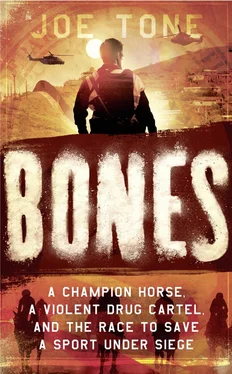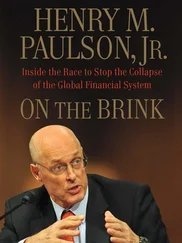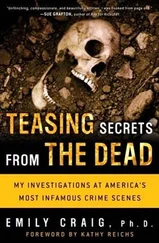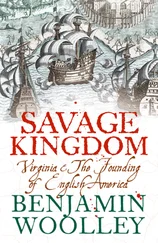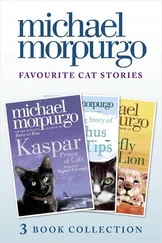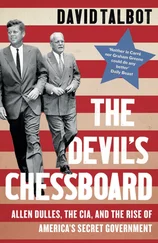Agents moved in and out of the room. They didn’t announce it, but José could guess what they were doing: making calls to whatever agency might have some questions about his little brother.
Thirty years before, when José was just a teenager, he had crossed this river on his way to lay bricks in Dallas. In time, people like him—Mexicans crossing north in search of work their homeland couldn’t provide—would be weaponized and dragged to the front lines of America’s culture war. But back then, for teenage José, it was as simple as crossing the bridge, driving seven hours north, finding a job, and going to work.
He laid his share of bricks in those early years. A few of his brothers did, too. They were constructing what could have been the foundations of a working-class American life. But before long, José was the only Treviño Morales brother left in Dallas. Now, as his wait on Bridge One stretched into its second sweaty hour, two of those brothers were dead. One was in an American prison. Another was enmeshed in Mexico’s trafficking business.
Then there was Miguel, the brother these feds so badly wanted to know about. He was a leader of Los Zetas, a criminal organization raking in hundreds of millions of dollars every year, much of it controlled by Miguel. Because of this vast accumulation of power and wealth—and because of Miguel’s unrivaled lust for mass, public, and grotesque violence—he was one of the most wanted drug lords in Mexico.
It had been this way for several years now. So for several years, this was who José was when he showed up at the border: the bricklaying brother of one of Mexico’s most wanted men. For all this harassment, José was never any use to the feds. He’d spent three decades as a mason; his callused hands had helped build Dallas’s exurban excess and then revive its urban core. No matter how hard the feds tried, they had never been able to connect brick-laying José to brick-smuggling Miguel.
But José was no longer a bricklayer, and that interested the feds. Recently, he had remade himself into a successful racehorse owner. He’d taken the racing business by surprise, quickly maneuvering into its upper ranks by hanging on to the fluttering silks of an undersized colt and partnering with a down-on-its-luck stud farm. Now, after winning a couple of big races, José was buying up some of the most expensive breeding mares in quarter-horse racing, the brand of racing preferred by the cowboys of the American Southwest and Mexico.
José’s new career opportunity had come just in time. In thirty years of laying bricks, he had never been able to do much more than keep his family afloat, even as his cartel-affiliated brothers in Mexico amassed cash, property, and power. Now his teenage daughter wanted to be the first in his extended family to finish college, with her three younger siblings hopefully not far behind. A few more breaks on the track and José might be able to pay for it all.
But his success at the track also made these crossings more titillating for the agents who swarmed these borderland interview rooms. Because however mysterious José’s little brother was to them, there was one thing they all seemed to know: Miguel loved horses.
About ninety minutes after José got pulled in, an agent from Immigration and Customs Enforcement showed up to ask all the usual questions.
I’m not proud of my brother, José said.
My brother has made my life hell, José said.
I don’t know where my brother is, José said.
He almost definitely didn’t. Few people knew where Miguel was at any given time. The moment people did know, his whereabouts changed.
At about ten-fifteen that morning, two hours after José had been pulled out of line, at least three since he’d stepped into it, the agents handed him back his belongings. There were some clothes, boots, toiletries, and a few coloring books and crayons, which he was bringing back for the youngest of his four kids. They were waiting for him in Dallas, and he was finally on his way.
You’ve seen a horse race. Maybe you’ve leaned over the rail at your local track, hollering at the seven because you bet the seven, for reasons that made sense at the time. Maybe you’ve donned a floppy hat and gotten hammered off mint juleps, running in from the kitchen to catch the end of—or maybe a replay of?—the Derby. Maybe you’ve been in a Vegas sportsbook, where not even the immortal gods of American football can muscle the ponies off those little TVs in the corner.
Somewhere, someway, you’ve seen a horse race. Most likely you saw thoroughbreds, the horses that were loping down the backstretch when you stumbled in from the kitchen. Maybe you watched a steeplechase, for the novelty of seeing these graceful beasts leap through a manicured obstacle course. But it’s unlikely that you’ve ever knowingly watched a quarter-horse race, and, for our purposes, you’ll need to see one, if only in your mind’s eye or on YouTube.
Be forewarned: There are no mint juleps here. The best we can offer is a lime in your Corona.
The colonists who settled Virginia and the Carolinas invented quarter-horse racing in the 1600s. It was more or less an accident.
They’d brought a handful of Arabians and thoroughbreds with them on the voyage, and between shifts tilling the New World, they started racing through the main streets of their newly settled villages. The races were informal and short, usually about a quarter of a mile, run between two horses down straight streets lined with villagers. But winning them became a point of pride, and over time, the colonists discovered that breeding their horses with those ridden by the natives resulted in even faster racehorses. They called this new breed the quarter-of-a-mile running horse, accurately if not cleverly.
Around this time, a British military captain visited North Carolina and wrote home about his experience. He marveled at the lush tobacco fields, the “shocking barbarities of the Indians,” and the horses:
They are much attached to quarter racing, which is always a match between two horses to run a quarter of a mile, straight out, being merely an exertion of speed. They have a breed that performs it with astonishing velocity … I am confident there is not a horse in England, or perhaps the whole world, that can excel them in rapid speed.
In the 1800s, as settlers moved west, they encountered a racing culture similar to the one established by those original colonists. Three centuries of ranching across Mexico—including in the northern state of Coahuila y Tejas — had propagated a breed of stock horses built for working the farm. They were short, muscular, and placid amid the chaos of a cattle herd. They were “cow ponies,” first and foremost. But they could run, too, if only for a few hundred yards, and their serenity with a rider in the saddle made them easy to settle down at the starting line.
The Southwest in the nineteenth century was defined by bloodshed, as Coahuila y Tejas became the Republic of Texas, and then an American state. Throughout it all, though, the white American settlers, Mexican ranchers, and Native Americans challenged each other to quarter-mile races all across the disputed territory. Gamblers would line the track, forming a human rail, with money and property at stake. One race was said to attract such prolific betting that it bankrupted and shuttered an entire Texas town.
The eastern settlers touted their “quarter-of-a-mile running horses.” The Texans swore by the speed and smarts of their cow ponies. An imported stallion named Steel Dust quickly extinguished the East-West rivalry. He was already thirteen when he arrived from the East in 1844, but he beat every cow pony they lined him up against. Before long he was being bred with ranch horses from across the new state of Texas, infusing the Spaniards’ placid cow-pony breed with a burst of speed and additional weight.
Читать дальше
